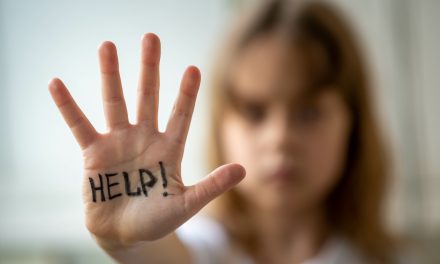Hurricane Ian

Vibrio Vulnificus
When a hurricane begins to develop, so do the memes about Florida and other social media content. Many videos and photos are of Floridians floating through flooded waters on a giant flamingo or even skiing in otherwise flooded streets. Often we see children playing in the large pools and floods, which makes light of a scary situation. Experts have always advised against this for obvious reasons. You never know what’s underneath the water that could be potentially hazardous or what’s actually in the water, such as bacteria.
Most importantly, it is advised to stay out of flooded water unless necessary due to Vicrio Vulnificus. Vicrio Vulnificus is otherwise known as a flesh-eating bacteria you can get from flooded water if you have any sore, cut, new, tattoo, or abrasion on the skin. It is as severe as it sounds and can even lead to death.

The CDC states that one in five people who get Vibrio Vulnificus will die and often within just a few days of getting the infection. In severe cases, the Vibrio infection can lead to Necrotizing fasciitis, which causes the skin around the wound to die. This particular bacteria is where this infection gets its name, “flesh-eating.”
Florida has seen a spike in cases that can be attributed to the impact of hurricane Ian. Thus far, in 2022, there have been 65 reported cases, with Lee County accounting for 28 cases. This makes sense, as Lee County took the biggest hit from hurricane Ian. In 2022 there were 13 reported deaths from Vibrio Vulnificus.
Whereas it might seem fun or a way to lighten the mood, staying out of flooded waters is vital after a hurricane. If you have no other choice and need to evacuate if it is safe to do so, make sure any open cuts or wounds and sealed, covered and protected from the water.
Damages

The University of Florida reports that hurricane Ian impacted five million acres of agricultural land and that 60% of that land was grazing land. Agricultural land is typically used to produce agriculture which can include crops and livestock. There has also been an additional 500,000 acres of land affected by the residual effects of hurricane Ian. The agriculture that will be most affected is vegetables, melons, citrus, and animals, along with animal products.
Similarly, the parts of Florida that are rebuilding Florida’s agricultural production can be impacted by the need to fix and restore equipment and land. This can be a costly necessity for farmers and locals, but one that is unavoidable. The crops can also be directly impacted due to damage and ongoing issues such as waste due to power outages and water supply issues. There may be a decrease in the goods that can be produced until production returns to normal. Also, the prices of these goods may be altered in the upcoming months.
Healthcare
Before the storm even hit, sixteen southwest Florida hospitals were evacuated. Many hospitals that stayed open during and after the hurricane experienced devastating power issues and, most notably, a severe lack of water supply.
Unfortunately, our healthcare workers already felt the continued stress and strain from the Covid-19 pandemic, and many share their stories of extreme burnout. We have seen many workers leaving the bedside, and the United States is experiencing nursing and staffing shortages. This created an even more difficult situation for those healthcare workers working during and after hurricane Ian.
Dialysis patients took a particularly hard hit during the impact and wake of hurricane Ian. Many need treatments every other day to stay alive. Between power outages, no water supply, and transportation issues, these patients faced difficulty getting the treatment they needed. There have been many patients hospitalized for weeks due to missing dialysis treatments.
Housing
It is estimated that 110,000 homes were either affected or destroyed due to hurricane Ian. These numbers are expected to increase as assessments continue.
The Federal Emergency Management (FEMA) announced that it would be aiding in temporary housing to hurricane Ian survivors in Charlotte, Collier, DeSoto, and Lee counties. FEMA also announced that the federal support would be well over $1.4 billion. FEMA is also providing a plethora of assistance initiatives for those affected by Ian, including lost wage compensation, housing assistance, displacement help, managing insurance claims, disaster relief, and more. You can visit the FEMA website here to find all the resources you need.
Florida is already experiencing an unprecedented housing crisis, and many are concerned with how Ian will affect this already inflated real estate market. However, the draw and lure of Florida have been historically unaffected. After a similarly large hurricane like Irma, the market saw a slight dip in purchasing and selling but quickly regained traction. The storms have seemingly never deterred people significantly from moving to Florida; therefore, the market has typically sustained whatever current pace it was.
With interest rates sky-high, people are more likely to struggle to buy due to those numbers versus the effects of hurricane Ian. The main issue now would be inventory. Sellers are still repairing homes and properties, and some were outright destroyed. Even with this, it is believed we will experience only a tiny dip in the market and can expect a quick bounce back. Despite this tragedy, Florida will still be one of the most desired locations in the United States.
Injuries and Death
President Biden announced that hurricane Ian was the deadliest hurricane to hit Florida since 1935, with the current total being 117 deaths. Most of the victims were older adults and the elderly. It has been reported that many had prior existing health conditions and were already a vulnerable population. This also points to what Florida is known for; the place to retire. With a swarm of people infiltrating Florida, it comes as no surprise that a large part of the population is an older demographic. An 89-year-old male died when the power went out, and he was unable to receive the oxygen he required. An 82-year-old Lee County man died from evacuating without his medication.
There has been a lot of back and forth regarding casualties and who is at fault. Many criticize people for staying, while others condemn the state for not giving an evacuation order earlier. The elderly and people with medical conditions are vulnerable populations, making it that hard to pick up and evacuate. Many rely on oxygen or even have mobility issues that make them unable to leave in a timely manner.
Lee County is facing criticism because it did not issue an evacuation order until the day before Ian made landfall. With such a vulnerable population, it makes sense as to why many could not evacuate in the allotted hours that were given. Lee County has been defending itself, saying it did not issue an evacuation order due to the projected shift in Hurricane Ian. However, the neighboring counties issued evacuation orders two days before Ian took landfall.
DeSantis’s And Bidens Response
It has been no secret that Florida Governor Ron DeSantis and United States President Joe Biden have feuded on political issues in the past. Many were worried this would impact the response and rebuilding of Florida after Ian. Both men put their differences aside to come together for the more significant common cause, which would be to help Florida rehabilitate its state. After careful consideration, president Biden flew down to offer his support for Florida and give encouragement.
DeSantis was also in attendance, despite a meme or two about his facial expressions during the president’s speech and the white boots DeSantis was sporting. After a natural disaster, the community impacted and the border communities must come together to rebuild the devastation. There isn’t any other way to successfully recover from such a large hurricane.
Is Florida Really Set up for Climate Change?
Climate change is a serious issue facing Florida and the entire world. Climate change is long terms shifts in weather patterns and temperatures caused by human activities. Most effects caused by climate change are irreversible, so preserving the earth we live on is extremely important. Unfortunately, we needed to go in a different direction and start making changes yesterday.
Many are speculating that even though Florida is a peninsula that faces extreme weather such as hurricanes, flooding, and seawater erosion, it is not even built to withstand its climates. Many of the hospitals affected have been criticized for not being equipped to handle hurricane Ian and other vital buildings and residences.
When you have a hurricane, you can expect flooding, power outages, and water issues. These are almost a given for most major hurricanes, yet many buildings are not only not equipped to handle these issues, but measures are also not being taken to problem solve these issues. Many hospitals are still feeling burnout from Coivd-19, understaffing, and patient overload, so they are already bombarded with issues to problem solve that hurricane-proofing the facility is pushed to the wayside.
With climate change, we can expect these natural disasters to get worse, which leaves people questioning what Florida’s response will be for keeping the sunshine state safe in the future. Unfortunately, there needs to be a sense of urgency to build not only hospitals but the state to create a safe environment that is better equipped to manage natural disasters. Keep in mind some facilities and hospitals, and roads can flood on a sunny day during one of Florida’s usual rain storms. It’s not only the major natural disasters that need to be accounted for.
We do have some hope that change will happen. Large hurricanes like Ian are a cruel reminder of what needs to be done to keep more people safe—elevating homes, implementing seawalls, and utilizing pumps and floodgates are all being considered. Many waterfront hospitals have taken action post-Ian by moving all electrical panels and critical operations above the first floor. For Florida, this seems like an apparent building plan that should have been considered in the first place.
Still, hopefully, with some facilities making changes, others will follow suit and for future building models. Many are also elevating facilities and residences as a whole, along with parking lots. It’s not just the building themselves that need to be considered for reconstruction but also the roads and accessibility to them. This is a billion-dollar time-consuming project that no one wants to pay for, but that is absolutely necessary.































South Florida Media Comments